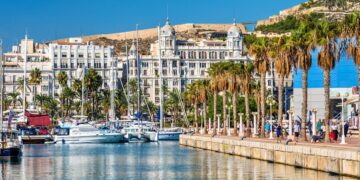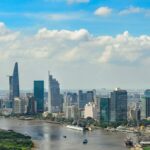A closure could cost the tourism industry more than €100 million a day.
Unless the US Congress passes government funding legislation and President Joe Biden can sign the bill by midnight on Saturday, October 1, hundreds of thousands of federal workers could be laid off. This could have a devastating impact on travelers across the country, with a range of services from national parks to airports affected.
The US Travel Association has warned that a government shutdown could cost the tourism industry up to $140 million (€133 million) a day.
But what does this really mean for travellers?
Will the government shutdown affect U.S. flights?
Many essential travel services such as airport security and passport or visa processing will continue. But US Transportation Secretary Pete Buttigieg warned on Wednesday that a partial government shutdown could still disrupt air travel.
According to the White House, past government shutdowns have caused “significant delays and longer wait times” for travelers. Transportation Safety Administration TSA workers and air traffic controllers are still required to work, but are not paid during this time. Instead, they have to wait until the shutdown ends to receive their paycheck.
Buttigieg said that could mean thousands of air traffic controllers will have to be fired and the training of 1,000 others halted. Shortage of air traffic controllers have caused prolonged flight disruptions in the United States, and the Federation Aviation Authority has already said it is falling behind its annual training goals.
During the 35-day shutdown in 2019, unexpected absences among air traffic control and TSA workers also increased, resulting in increased wait times at some airports. A brief shutdown is likely to have little effect, but if it lasts long-term, it could mean more significant disruptions to air travel.
How else might tourists be affected by the government shutdown?
With the leaves turning autumnal, it’s the peak season for people to take in the colors in parks across the country. But the 425 national parks across the United States and a number of different historic landmarks will close during the government shutdown. This includes historic homes, battlefields, museums, and all national park amenities such as visitor centers, campgrounds, and educational programs.
The National Parks Conservation Association strongly advises against visiting parks during the closure as there are likely to be very few, if any, staff. This is a health and safety issue and the visit could also impact the protection of wildlife and natural and cultural resources.
Many parks and monuments remained open during the 2018 and 2019 closures due to state funding, but there was no waste collection and facilities such as restrooms were closed. Reports of serious vandalism and damage have also increased.
Some states have already said they are planning to try to keep their national parks open in the event of a closure, including the Grand Canyon in Arizona.
The National Parks Service says that during the government shutdown in 2013, the closure of all national parks and monuments resulted in a loss of tourism revenue of $500 million (€474 million).
It is also worth considering that road maintenance is unlikely to be carried out. If you are in an area affected by to snow, it may not be cleared and make travel dangerous. Some rescue and security services may also be limited.
Should you cancel your travel plans?
With the potential for disruption to travelers across the country, it’s understandable that many people may be considering cancelling their travel plans. About 6 in 10 Americans say they would cancel or avoid air travel if service shut down, according to Ipsos and US Travel. Unfortunately, your travel insurance is unlikely to reimburse you for your trip if you decide to do so.
So what are the alternatives? First, passengers should have a little more patience with airport staff who may be stressed and strained due to the closure.
If you had planned to travel to a national park, perhaps all would not be lost. Many sites close to public land are likely to be open, as are attractions and restaurants operated by private owners. Contact your accommodation provider to see if they have any suggestions and find out what their recommendations are for your stay.
For those who intend to do so field in a national park, you might look for a different site in an alternative area. State parks, for example, are often less popular and will not be affected by the closure.
It’s important to remember that the potential disruption caused by the government shutdown could have a huge impact on the tourism industry. So if you are able to, consider postponing your trip until the situation is resolved.
Image:Getty Images










































Who needs travel plans anyways? Lets all become hermits and save money!
Traveling allows us to explore new cultures, broaden our horizons, and create lifelong memories. Its not just about money, but enriching our lives. So, while being a hermit may save you some cash, youll miss out on the incredible experiences that only travel can offer.
Who needs to travel when you can just stay home and binge-watch Netflix? #shutdownperks
Who needs a government shutdown to ruin travel plans? Just book a budget airline!
Budget airlines may not be perfect, but blaming them for ruining travel plans is unfair. Government shutdowns, on the other hand, have a much greater impact on the entire travel industry. Lets focus on the real issue here.
Who needs flights when you can hitchhike with aliens during the government shutdown? #OutOfThisWorldTravel
Seriously? Are you actually suggesting hitchhiking with aliens as a viable alternative to flights? Maybe you should come back down to earth and think about the practicality and safety of such a ridiculous idea. #GetReal #NotEvenCloseToRealistic